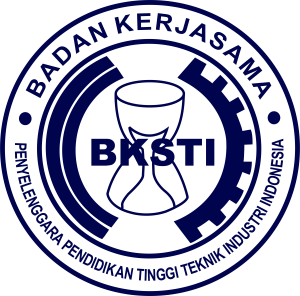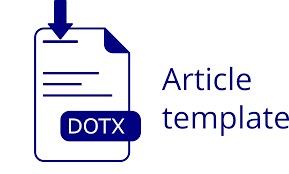PRODUKSI COMMERCIAL GRADE FURFURAL DARI TONGKOL JAGUNG DALAM MENUNJANG AGROINDUSTRI NASIONAL
DOI:
https://doi.org/10.37090/indstrk.v6i1.575Keywords:
Corncob, digester, purification, prototypeAbstract
Furfural as one of the strategic chemicals, especially in the petroleum industry (oil refineries) has a fairly wide market opportunity. Up to now, there is no furfural factory in Indonesia. The development of furfural industry technology can be used as the forerunner to the establishment of a national furfural factory. The development of furfural industry technology from corn cobs can also increase the added value of corn cobs while reducing environmental problems. Research Methodology in Furfural Manufacturing Process consists of Process Selection, preparation of raw materials, hydrolysis and dehydration processes, as well as yield and purification stages. The outputs that have been obtained from initial and further research are a Digester Prototype with a capacity of 1000 L along with its platform and a stripper column with a reboiler capacity of 60 L, a product in the form of crude furfural with a purity of 94% which is ready for the purification process, a shelter with a size of 4 x 9 m2 which is in Inside there is a steam generator, digester and stripper column and a vacuum distillation column with a reboiler capacity of 60 L and a column height of 200 cm. If viewed from the calculation of the gross profit margin on a basis of 1 ton of furfural, the establishment of a furfural factory can be said to be interesting for further studyDownloads
References
Arnold, D. R., & Buzzard, J. L. (2003,
September). A novel process for furfural production. In Proceedings of South African Chemical Engineering Congress (pp. 3-5).
ASTIKA, D. T. (2007). Prarancangan Pabrik
Furfural Dari Tongkol Jagung Dengan Proses Quaker OATS Kapasitas 5.000 Ton Per Tahun (Doctoral dissertation, Universitas Muhammadiyah Surakarta).
Brownell, L. E., & Young, E. H. (1959).
Process equipment design: vessel design. John Wiley & Sons.
Coulson, R. (1983). Chemical Engineering. Vol, 6th. Pergamon Press. New York.
Fogler, H. S. (2010). Essentials of Chemical Reaction Engineering: Essenti Chemica Reactio Engi. Pearson Education.
Garrett, D. E. (2012). Chemical engineering economics. Springer Science & Business Media.
Geankoplis, C. J., Hersel, A. A., & Lepek, D. H. (2018). Transport processes and separation process principles (Vol. 4). Boston, MA: Prentice hall.
Hettenhaus, J. R., Wooley, R., & Wiselogel, A. (2000). Biomass Commercialization Prospects the Next 2 to 5 Years; BIOMASS COLLOQUIES 2000 (No. NREL/SR-580-28886). National Renewable Energy Lab., Golden, CO (US). https://www.dalinyebo.co.za. 2017. Diakses pada 10 April 2017.
Isdiyanto, R., & Hasanudin, U. (2010). Rekayasa dan uji kinerja reaktor biogas sistem colar pada pengolahan limbah cair industri tapioka. Ketenaga listrikan dan Energi Terbarukan, 9(1), 14-26.
Jawad, M. H., & Farr, J. R. (2018). Structural analysis and design of process equipment. John Wiley & Sons.
Kroschwitz, J. I., & Howe-Grant, M. (1991).
Kirk-Othmer encyclopedia of chemical technology. John Wiley and Sons, New York, 7, 127.
Kern, D. Q., & Kern, D. Q. (1950). Process heat transfer (Vol. 5). New York: McGraw-Hill.
Kirk, R. E., Othmer, D. F., Grayson, M., & Eckroth, D. (1985). Kirk-Othmer Concise encyclopedia of chemical technology.--. Wiley.
Mc Ketta, J. a. (1977). Encyclopedia of Chemical Processing and Design, Vol 5,MarcelDeckerinc.NewYork.
Machado, G., Leon, S., Santos, F., Lourega, R., Dullius, J., Mollmann, M. E., & Eichler, P. (2016). Literature review on furfural production from lignocellulosic biomass. Natural Resources, 7(3), 115-129.
Perry,R.a.(2003). Perry's Chemical Engineering's Handbook.7th edition.
McGraw HillBook Company.Singapore.
Peters, M. T. (2003). Plant Design and Economics for Chemical Engineering, 4thed,McGraw-Hill NewYork.
Perry, R. H., Green, D. W., & Maloney, J. O. (1984). Perry's Chemical Engineer's Handbook Chemical Engineer's Handbook. McGraw-Hill.
Rundus, I, and J. Katkevies, Pre-feasibility Study for Furfural Production in Latvia, Report by Latvian Development Agency, 1998
Reklaitis, G. (1983). Introduction Material and Energy Balance. Mc Graw Hill Book Company. New York.
Smith, J. V. (2001). Introduction to Chemical Engineering Thermodynamics, 6thed, McGraw-Hill Book Company. New York.
Shafeeq, A., Muhammad, A., Sarfaraz, S., Akram, Z., Saeed, H. U., & Farooq, U. (2015). Effect of acid concentration on the extraction of furfural from corn cobs. International Journal of Chemical Engineering and Applications, 6(5), 381.
Suharto, Susanto H., 2006. Pemanfaatan Limbah Tandan Kosong Sawit untuk
Produksi Furfural, Laporan Teknis Riset Kompetitif LIPI 2005-2006.
Suharto, S., Susanto, H., & Pudjiono, P. I. (2012). PROSES PEMURNIAN CRUDE FURFURAL. Jurnal Sains MIPA Universitas Lampung, 13(12).
Susanto, H. Suharto dan Kismurtono, 2004. Rekayasa Digester Pemasakan Tandan Kosong Sawit untuk Produksi Furfural dan Pulp, Laporan Akhir RUT IX.
Thakore, S. B., & Bhatt, B. I. (2015). Introduction to process engineering and design. McGraw-Hill Education.
Turton, R., Bailie, R. C., Whiting, W. B., & Shaeiwitz, J. A. (2008). Analysis, synthesis and design of chemical processes. Pearson Education.
Ullman, F. (2007). Ultimann's Encyclopedia of Industrial Chemistry, 7th Ed., 40 Volume Set, John Wiley and Sons. New Jersey.
Win, D. T. (2005). Furfural-gold from garbage. Au J. Technol, 8(4), 185-190.
Witono, J. A (2005). Produksi Furfural dan Turunannya. Buletin Ristek Balitbang, Jawa Barat
Walas, S. M. (1990). Chemical Process Equipment. Butterworth-Heinermann.Washington.
Yaws, C. (1999). Chemical Properties Handbook, McGraw Hill Companies. USA.









